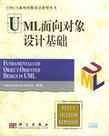UML面向对象设计基础
出版时间:2003-12-1 出版社:科学出版社 作者:MEILIR PAGE-JPNES 页数:458 字数:569000
Tag标签:无
内容概要
UML已成为描述面向对象设计符号的事实上的标准。本书介绍了面向对象软件设计的基本概念、符号表示、术语、准则以及原理等内容,其中第一部分(第1章和第2章)介绍了面向对象的基本概念以及面向对象编程的发展过程,第二部分(第3章至第7章)对UML进行了系统的介绍,第三部分(第8章至第14章)较深入的介绍面向对象设计的原理。最后一张(第15章)对软件构件的优缺点作了分析。 本书可供面向对象技术的程序员、设计人员、系统工程师或技术经理使用。
书籍目录
ForewordPrefacePart Ⅰ Introduction Chapter 1 What Does It Mean to Be Object Oriented,Anyway? 1.1 Encapsulation 1.2 Information/Implementation Hiding 1.3 State Retention 1.4 Object Identity 1.5 Messages 1.6 Classes 1.7 Inheritance 1.8 Polymorphism 1.9 Genericity 1.10 Summary 1.11 Exercises 1.12 Answers Chapter 2 A Brief History of Object Orientation 2.1 Where Did Object Orientation Come From? 2.2 Object Orientation Comes of Age 2.3 Object Orientation As an Engineering Discipline 2.4 What's Object Orientation Good For? 2.5 Summary 2.6 Exercises 2.7 AnswersPart Ⅱ The Unified Modeling Language Chapter 3 Basic Expression of Classes,Attributes,and Operations 3.1 The Class 3.2 Attributes 3.3 Operations 3.4 Overloaded Operations 3.5 Visibility of Attributes and Operations 3.6 Class Attributes and Operations 3.7 Abstract Operations and Classes 3.8 The Utility 3.9 Parameterized Classes 3.10 Summary 3.11 Exercises 3.12 Answers Chapter 4 Class Diagrams 4.1 The Generalization Construct 4.2 The Association Construct 4.3 Whole/Part Association 4.4 Summary 4.5 Exercises 4.6 Answers Chapter 5 Object-Interaction Diagrams 5.1 The Collaboration Diagrams 5.2 The Sequence Diagrams 5.3 Asynchronous Messages and Concurrent Execution 5.4 Summary 5.5 Exercises 5.6 Answers Chapter 6 State Diagrams 6.1 Basic State Diagrams 6.2 Nested States 6.3 Concurrent States and Synchronization 6.4 Transient States from Message-Result Arguments 6.5 Continuously Variable Attributes 6.6 Summary 6.7 Exercises 6.8 Answers Chapter 7 Architecture and Interface Diagrams 7.1 Depicting System Architecture 7.2 Depicting the human Interface 7.3 Summary 7.4 Exercises 7.5 AnswersPart Ⅲ The Principles of Object-Oriented Design Chapter 8 Encapsulation and Connascence 8.1 Encapsulation Structure 8.2 Connascence 8.3 Summary 8.4 Exercises 8.5 Answers Chapter 9 Domains,Encumbrance,and Cohesion 9.1 Domains of Object Classes 9.2 Encumbrance 9.3 Class Cohesion:A Class and Its Features 9.4 Summary 9.5 Exercises 9.6 Answers Chapter 10 State-Space and Behavior 10.1 State-Space and Behavior of a Class 10.2 The State-Space of a Subclass 10.3 The Behavior of a Subclass 10.4 The Class Invariant as a Restriction on a State-Space 10.5 Preconditions and Postconditions 10.6 Summary 10.7 Exercises 10.8 Answers Chapter 11 Type Conformance and Closed Behavior 11.1 Class versus Type 11.2 The Principle of Type Conformance 11.3 The Principle of Closed Behavior 11.4 Summary 11.5 Exercises 11.6 Answers Chapter 12 The Perils of Inheritance and Polymorphism 12.1 Abuses of Inheritance 12.2 The Danger of Polymorphism 12.3 Summary 12.4 Exercises 12.5 Answers Chapter 13 Techniques for Organizing Operations 13.1 Mix-In Classes 13.2 Rings of Operations 13.3 Summary 13.4 Exercises 13.5 Answers Chapter 14 Class Cohesion and Support of States and Behavior 14.1 State Support in a Class Interface 14.2 Behavior Support in a Class Interface 14.3 Operation Cohesion in a Class Interface 14.4 Summary 14.5 Exercises 14.6 Answers Chapter 15 Designing a Software Component 15.1 What Is a Component? 15.2 Similarities and Differences Between Component and Objects 15.3 Example of a Component 15.4 Internal Design of a Component 15.5 Lightweight and Heavyweight Component 15.6 Advantages and Disadvantages of Using Components 15.7 Summary 15.8 Exercises 15.9 AnswersAppendix A Checklist for an Object-Oriented Design WalkthroughAppendix B The Object-Oriented Design Owner's ManualAppendix C The Blitz Guide to Object-Oriented TerminologyGlossaryBibliographyIndex
图书封面
图书标签Tags
无
评论、评分、阅读与下载
